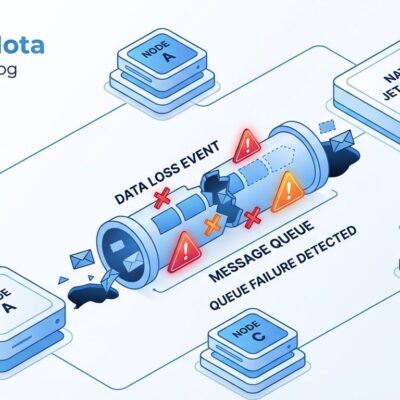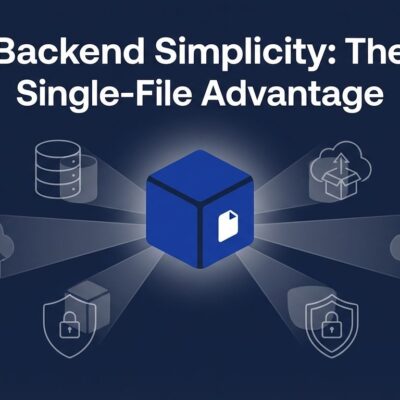
GraphLite, a new Rust-based embedded graph database, launched last week with full support for ISO GQL (Graph Query Language) – the newly standardized query language finalized in 2024. Positioning itself as “the SQLite of graph databases,” GraphLite brings server-grade graph capabilities to embedded applications through a single binary with no server required. The project gained 83 GitHub stars in six days and is trending on Hacker News as developers realize embedded graph databases are an underserved category.
ISO GQL Standardization Changes the Game
For years, graph databases fragmented across proprietary query languages. Neo4j uses Cypher. Amazon Neptune uses Gremlin. Various systems implement SPARQL. Developers learning one couldn’t transfer skills to another. ISO GQL (ISO/IEC 39075), finalized in 2024, changes this by standardizing graph queries the way SQL standardized relational queries.
GraphLite is among the first implementations of the ISO GQL standard. This matters more than the database itself. Learning ISO GQL with GraphLite means your skills transfer to future graph databases that adopt the standard. It’s the equivalent of learning SQL in 1990 – betting on the standard rather than a proprietary language.
The standardization story is the real innovation here. ISO GQL could become as ubiquitous as SQL for graph queries within three to five years. GraphLite positions itself ahead of this wave.
Embedded Graph Databases: A New Category
Graph databases have historically required client-server architecture. Neo4j, ArangoDB, and other market leaders run as separate server processes. This creates overhead for mobile applications, desktop software, edge computing devices, and single-machine deployments. Developers resort to complex SQLite JOINs for relationship data, losing the elegance of graph queries.
GraphLite solves this with embedded design. The entire database runs in your application’s process through a single binary. No server setup. No network overhead. File-based storage like SQLite. Setup takes two to five minutes.
The SQLite comparison is deliberate. SQLite became ubiquitous because it eliminated deployment complexity. GraphLite aims for the same with graph data – simple, reliable, embedded everywhere.
Practical Use Cases
Mobile apps benefit immediately. Knowledge graphs, social features, and recommendation engines no longer require external databases. Desktop collaboration tools can embed social network functionality without deployment complexity. Edge computing devices process graph data locally without cloud connectivity.
The local-first software movement finds GraphLite particularly useful. Applications work offline with full graph capabilities, syncing when online becomes available. User data stays local by default.
Getting Started: Remarkably Simple
Installation requires three commands:
# Clone and build
git clone https://github.com/GraphLite-AI/GraphLite.git
cd GraphLite && cargo build --release
# Initialize database
./target/release/graphlite install --path ./my_db --admin-user admin --admin-password secret
# Start querying
./target/release/graphlite gql --path ./my_db -u admin -p secretFirst queries use familiar syntax if you know SQL. ISO GQL follows similar patterns:
-- Create a social network graph
CREATE SCHEMA /social;
CREATE GRAPH /social/network;
-- Add users and relationships
INSERT (:User {name: 'Alice'})-[:FOLLOWS]->(:User {name: 'Bob'});
-- Query the graph
MATCH (u:User)-[:FOLLOWS]->(f:User)
RETURN u.name, f.name;Time from clone to first query: approximately five minutes including build time.
Rust Foundation Provides Modern Infrastructure
GraphLite is written in pure Rust, placing it in the next generation of database infrastructure alongside DuckDB, SurrealDB, and TiKV. The Rust implementation provides memory safety without garbage collection, C/C++ level performance, and modern tooling.
Technical foundation includes Sled embedded storage (Rust-native), full ACID transaction support, cost-based query optimization, and comprehensive test coverage (185 unit tests plus 250+ integration tests). Developers trust Rust for correctness in systems software.
When to Use GraphLite vs Alternatives
Use GraphLite when data is relationship-heavy (social graphs, knowledge graphs), deployment is embedded (mobile, desktop, edge), you want a standard query language for portability, and graph size is small to medium. You need ACID guarantees locally.
Use SQLite when data is relational (tables, rows, columns), established ecosystem matters, and production-critical systems require 20+ years of maturity.
Use Neo4j when enterprise scale graphs justify client-server complexity and advanced features like clustering and monitoring are necessary.
GraphLite isn’t replacing Neo4j. It’s creating a new category. Think SQLite versus PostgreSQL – different tools for different scales.
Production Readiness: Honest Assessment
GraphLite launched six days ago at version 0.1.0. This is too new for production-critical systems. No performance benchmarks exist yet. The community is tiny (83 GitHub stars). Production readiness is unknown.
But this is the perfect time for exploration. Early adopters can influence the project’s direction. Developers can experiment with ISO GQL before it becomes mainstream. Prototypes and side projects face minimal risk.
The technical foundation appears solid – comprehensive tests, ACID guarantees, standard query language. The Rust implementation suggests thoughtful architecture. The timing aligns with ISO GQL standardization.
The Embedded Database Renaissance
GraphLite joins a broader trend toward specialized embedded databases. SQLite handles relational data everywhere. DuckDB brings columnar analytics to embedded contexts. SurrealDB experiments with multi-model approaches. GraphLite targets graph workloads.
Edge computing, local-first applications, and privacy concerns drive this renaissance. Developers want capable local storage without cloud dependency. GraphLite fills the graph database slot in this emerging ecosystem.
ISO GQL standardization accelerates adoption. When skills transfer across databases, developers invest time learning the standard. GraphLite benefits from this by implementing ISO GQL from day one rather than migrating from proprietary syntax later.
What Developers Should Know
GraphLite is worth watching. The combination of embedded design, ISO GQL standardization, and Rust foundation creates a compelling technical package. The use cases are clear – mobile apps, edge computing, local-first software.
Don’t bet production systems on it yet. Do experiment with prototypes. Do learn ISO GQL syntax. Do consider embedded graph databases for relationship-heavy data.
The project is six days old. Give it time to mature. But remember – SQLite started somewhere too. GraphLite could become the default choice for embedded graph databases if ISO GQL adoption follows the trajectory SQL took.
Check the GitHub repository for documentation and examples. The quick start guide claims five minutes from clone to first query. Try it. The embedded database renaissance is happening. GraphLite positions itself at the intersection of three trends: standardization (ISO GQL), embedded computing (SQLite pattern), and modern infrastructure (Rust).
That’s a strong foundation for what could become essential infrastructure.






